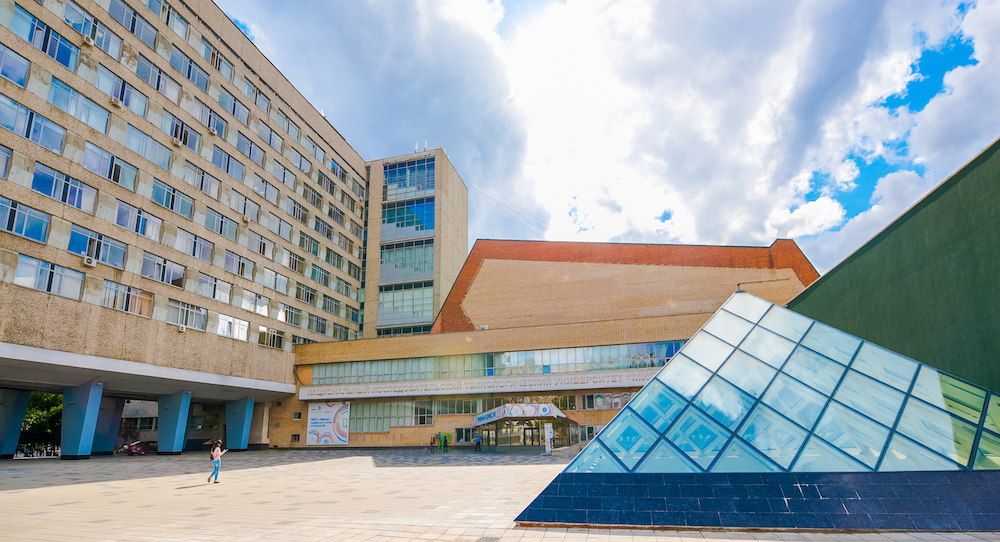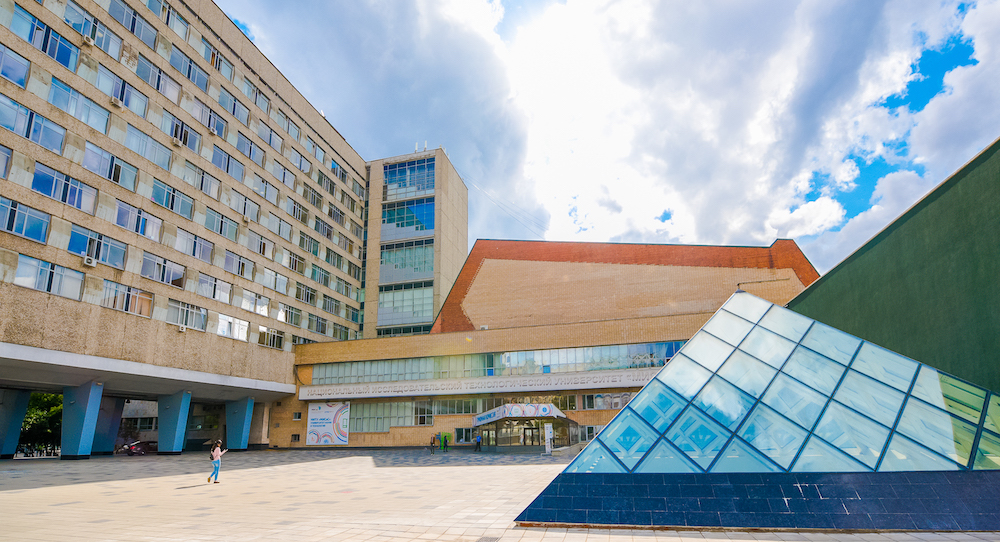
Work on the creation of a quantum computer within the framework of Russian Foundation for Advanced Research Projects has been carried out at the NISU MISIS since 2016 under the supervision of Valery Ryazanov, the chief researcher of the University's Laboratory for Superconducting Metamaterials. The design involves the use of superconducting materials as the basis for qubits.
Qubits (quantum bits) are the "heart" of a quantum computer, an analogue of the bits of a regular PC, but far more advanced. If PC "thinks" and counts in zeros and ones, that is, each bit of information can be encoded either as "0" or as "1", then the qubit has the property of the so-called superposition, the ability to be in both states simultaneously. This opens up great prospects, because with such computing resources a quantum computer will be able to considerably overtake the most powerful computing devices.
A quantum computer based on superconducting materials is a more advanced system than its counterparts. For example, other scientific teams are developing qubits on individual atoms (which can be "lost" due to a negligible size) and on ions (they can be ordered only linearly, which is physically inconvenient). The qubits created at NUST MISIS are made of aluminum, have a size of 300 microns. They cannot be "lost", and it is possible to order them non-linearly.
During the experiment, a two-qubit quantum computer solved Grover's quantum algorithm. Ideally, a quantum computer, thanks to the superposition, can find the correct value x in solving this problem in one call to the function f (x) with a probability of 100%.
"Grover's two-qubit algorithm is a very important step towards creating a quantum computer. We are not the first in the world to demonstrate its solution, but here we are talking primarily about technological achievement. We have shown the possibility of implementing all the necessary logical operations for a universal quantum processor: initialization, single-qubit and two-qubit operations, and reading, and with an innacuracy level satisfactory for small algorithms," said Ilya Besedin, an engineer at the Laboratory for Superconducting Metamaterials, one of the project participants.
The biggest difficulty in creating a useful quantum processor is errors. Unlike regular computers, which can work for years and always produce reproducible and predictable results, quantum computers are affected by noise, which distorts the calculation results. Despite the fact that the two-qubit processor created at NUST MISIS is too small to solve applied problems, it successfully "overcame" the threshold of 50% probability of a correct answer, reaching 53%.
The whole algorithm consists of initializing two qubits, four one-qubit operations, two two-qubit operations, and reading two qubits; errors in any of them reduces the probability of a correct answer.
A chip for a quantum computer was manufactured at Bauman Moscow State Technical University. The design of the algorithm and the launch of the device was done at NUST MISIS, where a unique set of equipment with cryostats was built in the Laboratory for Superconducting Metamaterials, allowing operation at extremely low temperatures to -273.14 degrees Celsius, which is close to absolute zero.
"Nevertheless, we still have a long way to go," adds Ilya Besedin. More recently, an article by Google, which was not yet officially published, appeared in press, stating that Google managed to implement the "quantum superiority" algorithm on a 53-qubit superconducting quantum processor. The task of "quantum superiority" is the most favorable task for a quantum computer, which is very difficult to accomplish on a classical computer. And if our overcoming of the "classic" limit is still a fundamental result, the Google result is already closer to the practical side: they were able to formulate and solve a task that their processor can complete in minutes, and a powerful supercomputer has been tested for weeks."
And even so, Google has not yet managed to make quantum computer solving some practically useful task more effectively than a classical one. However, now theoretical predictions regarding the computational superiority of quantum computers are confirmed by experiments.
The next important steps towards creating a useful quantum computer are a demonstration of reduced to several tens of qubits versions of "useful" quantum algorithms (for example, a simulator of a chemical reaction or the ground state of a molecule) and a demonstration of quantum error correction. Exactly for error correction, by the way, superconducting qubits are best suited: they can be organized into a two-dimensional lattice with local interactions and parallel gates, which is necessary for the "surface code", the simplest in terms of requirements and accuracy of operations.
"We also want to move in this direction, but from my point of view in quantum computing we should do not only "more", but also "better ": the superconducting qubits that we use now turn out to be quite expensive and give a lot of mistakes. And before doing hundreds and thousands of qubits, in my opinion, it's worth working on the most basic unit, a qubit", summarizes Ilya Besedin.
Qubits (quantum bits) are the "heart" of a quantum computer, an analogue of the bits of a regular PC, but far more advanced. If PC "thinks" and counts in zeros and ones, that is, each bit of information can be encoded either as "0" or as "1", then the qubit has the property of the so-called superposition, the ability to be in both states simultaneously. This opens up great prospects, because with such computing resources a quantum computer will be able to considerably overtake the most powerful computing devices.
A quantum computer based on superconducting materials is a more advanced system than its counterparts. For example, other scientific teams are developing qubits on individual atoms (which can be "lost" due to a negligible size) and on ions (they can be ordered only linearly, which is physically inconvenient). The qubits created at NUST MISIS are made of aluminum, have a size of 300 microns. They cannot be "lost", and it is possible to order them non-linearly.
During the experiment, a two-qubit quantum computer solved Grover's quantum algorithm. Ideally, a quantum computer, thanks to the superposition, can find the correct value x in solving this problem in one call to the function f (x) with a probability of 100%.
"Grover's two-qubit algorithm is a very important step towards creating a quantum computer. We are not the first in the world to demonstrate its solution, but here we are talking primarily about technological achievement. We have shown the possibility of implementing all the necessary logical operations for a universal quantum processor: initialization, single-qubit and two-qubit operations, and reading, and with an innacuracy level satisfactory for small algorithms," said Ilya Besedin, an engineer at the Laboratory for Superconducting Metamaterials, one of the project participants.
The biggest difficulty in creating a useful quantum processor is errors. Unlike regular computers, which can work for years and always produce reproducible and predictable results, quantum computers are affected by noise, which distorts the calculation results. Despite the fact that the two-qubit processor created at NUST MISIS is too small to solve applied problems, it successfully "overcame" the threshold of 50% probability of a correct answer, reaching 53%.
The whole algorithm consists of initializing two qubits, four one-qubit operations, two two-qubit operations, and reading two qubits; errors in any of them reduces the probability of a correct answer.
A chip for a quantum computer was manufactured at Bauman Moscow State Technical University. The design of the algorithm and the launch of the device was done at NUST MISIS, where a unique set of equipment with cryostats was built in the Laboratory for Superconducting Metamaterials, allowing operation at extremely low temperatures to -273.14 degrees Celsius, which is close to absolute zero.
"Nevertheless, we still have a long way to go," adds Ilya Besedin. More recently, an article by Google, which was not yet officially published, appeared in press, stating that Google managed to implement the "quantum superiority" algorithm on a 53-qubit superconducting quantum processor. The task of "quantum superiority" is the most favorable task for a quantum computer, which is very difficult to accomplish on a classical computer. And if our overcoming of the "classic" limit is still a fundamental result, the Google result is already closer to the practical side: they were able to formulate and solve a task that their processor can complete in minutes, and a powerful supercomputer has been tested for weeks."
And even so, Google has not yet managed to make quantum computer solving some practically useful task more effectively than a classical one. However, now theoretical predictions regarding the computational superiority of quantum computers are confirmed by experiments.
The next important steps towards creating a useful quantum computer are a demonstration of reduced to several tens of qubits versions of "useful" quantum algorithms (for example, a simulator of a chemical reaction or the ground state of a molecule) and a demonstration of quantum error correction. Exactly for error correction, by the way, superconducting qubits are best suited: they can be organized into a two-dimensional lattice with local interactions and parallel gates, which is necessary for the "surface code", the simplest in terms of requirements and accuracy of operations.
"We also want to move in this direction, but from my point of view in quantum computing we should do not only "more", but also "better ": the superconducting qubits that we use now turn out to be quite expensive and give a lot of mistakes. And before doing hundreds and thousands of qubits, in my opinion, it's worth working on the most basic unit, a qubit", summarizes Ilya Besedin.




 IonQ Achieves Industry Leading Performance on Next Generation Barium Qubits
IonQ Achieves Industry Leading Performance on Next Generation Barium Qubits